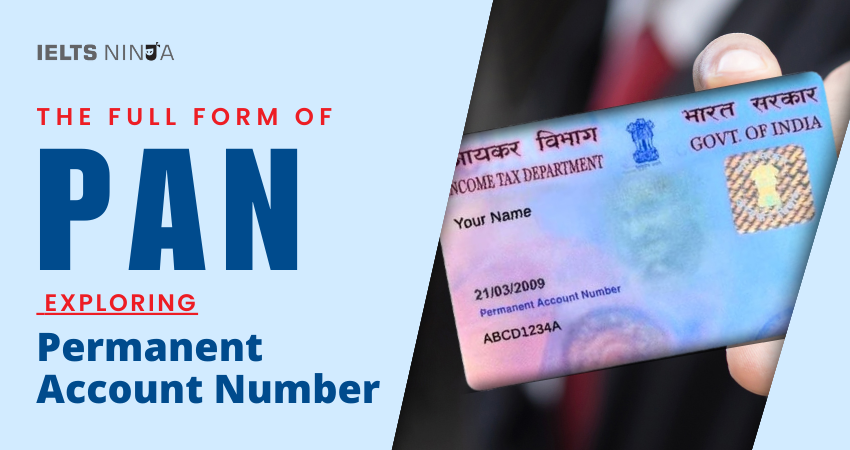The full form of PAN stands for “Permanent Account Number”, and it is a unique alphanumeric identifier issued by the Income Tax Department of India to individuals and entities. PAN serves as a vital identification number for various financial and tax-related transactions in India. In this guide, we will explore the details of PAN, its structure, and its significance. The following are the key details of PAN:
Structure of PAN:
A PAN is a 10-character alphanumeric code, with a combination of letters and numbers. The format of a PAN is as follows:
- The first five characters are letters (e.g., AAAAA).
- The next four characters are numbers (e.g., 1234).
- The last character is a letter (e.g., X).
Significance of PAN:
Tax Identification:
PAN serves as a primary tax identification number for individuals and entities in India. It is mandatory for filing income tax returns and conducting various financial transactions.
Prevention of Tax Evasion:
PAN helps the government track financial transactions, making it challenging for individuals and businesses to evade taxes by conducting large transactions in cash.
Financial Transactions:
PAN is required for a range of financial transactions, including opening a bank account, receiving a salary, purchasing or selling assets like real estate or vehicles, and investing in securities.
Banking and Investments:
PAN is necessary for opening a demat account for trading in stocks and securities, investing in mutual funds, and conducting other financial investments.
Income Tax Returns:
PAN is essential for filing income tax returns. It helps the Income Tax Department monitor an individual’s or entity’s financial transactions and assess their tax liability accurately.
Foreign Exchange:
PAN is required for foreign exchange transactions and for remittances abroad.
Application Process for PAN:
- Individuals and entities can apply for a PAN card through the official website of the Income Tax Department of India or through authorized service providers.
- The application process typically involves submitting the necessary documents, proof of identity, proof of address, and a passport-sized photograph.
Also Read: Best online IELTS coaching & training academy
PAN Card:
Once a PAN application is approved, the Income Tax Department issues a PAN card as proof of the allocated PAN. The card includes the PAN holder’s name, photograph, and PAN details.
PAN Validity:
A PAN card does not have an expiry date, and the PAN remains valid for the lifetime of the holder.
PAN Importance for Non-Resident Indians (NRIs):
NRIs who earn income in India are also required to obtain a PAN if their income exceeds the taxable threshold.
Penalty for Not Having PAN:
Failure to obtain and use a PAN when required by law can result in penalties and legal consequences, including the imposition of higher tax rates on certain financial transactions.
Changes and Corrections on PAN:
In case of changes in personal details or errors in the PAN card, individuals can request corrections or updates through the Income Tax Department.
Conclusion:
A Permanent Account Number (PAN) is a crucial identification number for individuals and entities in India, particularly for tax-related and financial transactions. It serves as a tool for tracking financial activities, ensuring tax compliance, and preventing tax evasion. Obtaining and correctly using a PAN is essential for individuals and businesses to fulfill their legal and financial obligations in India.








